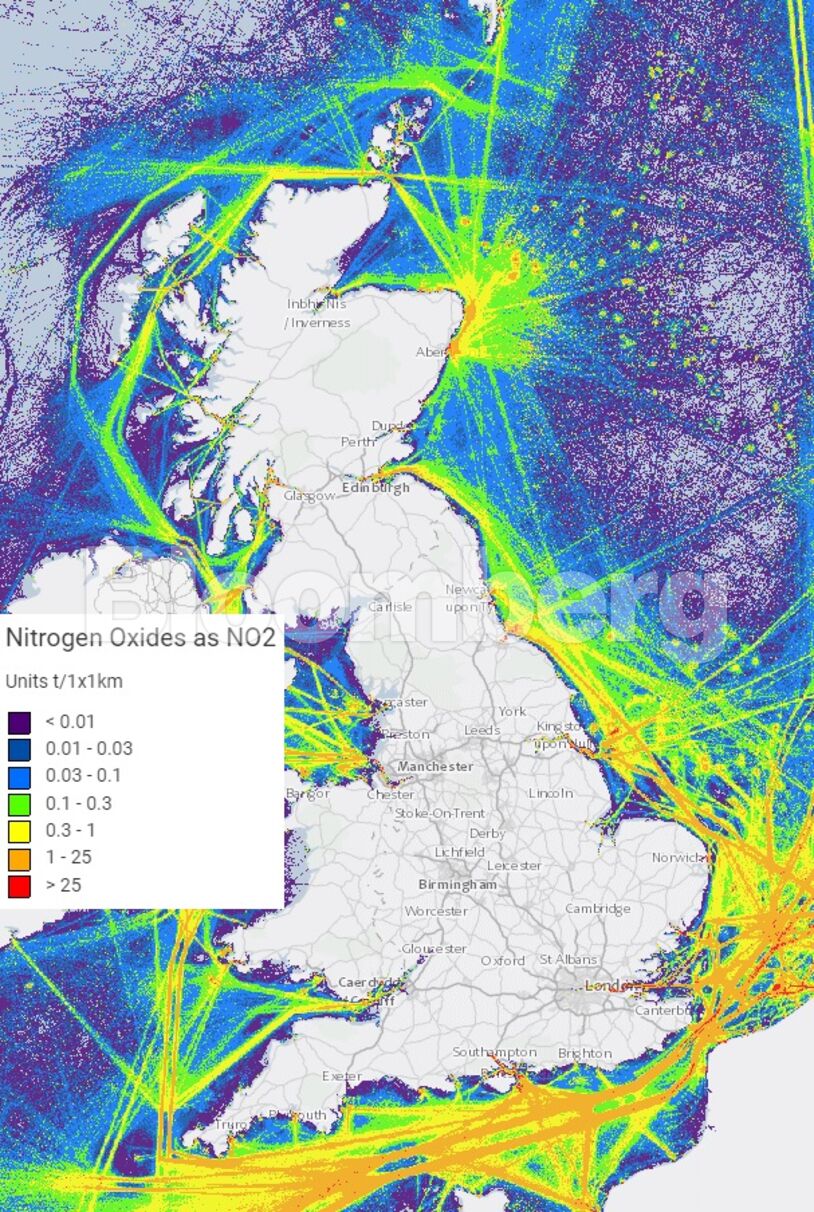After an historic agreement in 2018 by the International Maritime Organization, its members are negotiating ways to get to their goal of cutting the industry’s emissions in half by the middle of the century. All of them agree a ratings system is needed for the carbon intensity of ships, but they remain divided about how it should be calculated and how it should be enforced, according to people familiar with the talks and documents seen by Bloomberg.
The International Chamber of Shipping, a group that sponsored a compromise proposal alongside 14 other countries including Japan, China, Germany and India, said the deal would represent a major leap forward for the industry. Environmental groups say ship owners aren’t moving quickly enough and that the IMO’s effort will do little to contain the threat of global warming.
“We know more can be done and what we do must work in practice as well as in writing,” said Simon Bennett, deputy secretary general of the International Chamber of Shipping. “If we’re to achieve a truly global solution to the total decarbonization of world shipping, then radical, innovative technological solutions must be found.”

From Monday, parties to the IMO talks will discuss a compromise proposal mapping out how the industry will act. They remain split on the following issues:
- European countries argue that the most polluting ships should be sent to scrap if they still don’t comply by 2029.
- Others including China and Japan, which chairs the IMO’s environment body, along with the International Chamber of Shipping, say Europe’s proposed enforcement measures are too stringent since ships already face energy audits that could lead to penalties and sanctions if they don’t comply.
- Environmental groups and countries vulnerable to the worst impacts of climate change, such as the Marshall Islands, say none of the measures are tough enough and even Europe’s plan will allow shipping emissions to continue rising for another decade.
“Politically speaking if they agree the proposals, then they have made progress,” said Faig Abbasov, director of shipping for the campaign group Transport and Environment. “But this compromise text means they are essentially agreeing to do nothing.”
The shipping industry is responsible for an immense amount of pollution. That’s partly because many vessels burn a heavy form of oil called bunker fuel that’s rich in sulfur, which leads to acid rain. If it were a country, shipping would rank alongside Germany as the world’s sixth-largest emitter of CO2, according to the World Bank. The industry brought stringent new requirements in this year on fuel quality, helping reduce sulfur emissions. It remains a major source of nitrogen oxides, another powerful greenhouse gas.
Progress in cleaning up the industry has been slow. Talks began in 1995, and it took until 2018 for the IMO to agree on a target. The goal is for shipping to reduce its carbon-dioxide intensity by at least 40% by 2030 compared to 2008 levels.
They also agreed their plans should fall in line with the 2015 Paris Agreement to limit global warming to 1.5 degrees Celsius. Measuring shipping emissions in the middle of the ocean where there are no air pollution sensors makes the task of tracking progress difficult.
Any measures proposed by delegates at the end of this week’s talks will then be discussed and potentially agreed at a second round of negotiations set for Nov. 16 to Nov. 20 before being adopted six months later, said Natasha Brown, a spokeswoman for the IMO.
Next week, countries will thrash out the details of the legal framework for enforcing the ratings system, while talks on how to actually calculate the rating won’t be held until April 2021.
“What usually happens is you end up with some kind of compromise from the different countries bringing in the different elements together, so that wouldn’t be surprising,” Brown said.





















 Become an Insider
Become an Insider
Comments - Please login in order to comment.